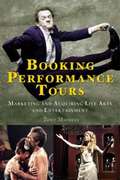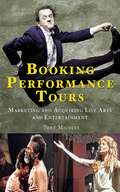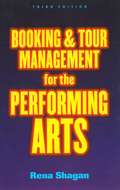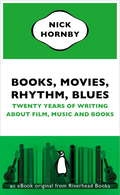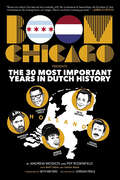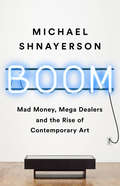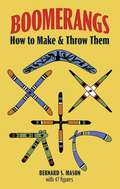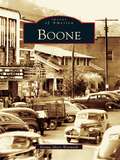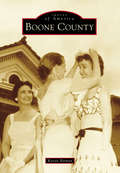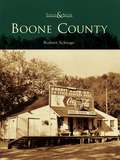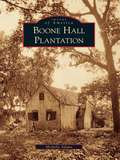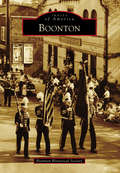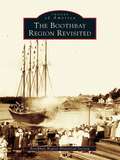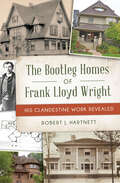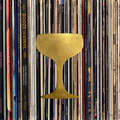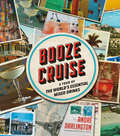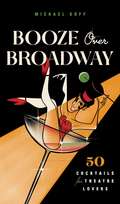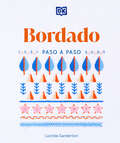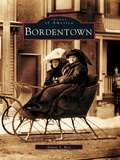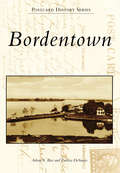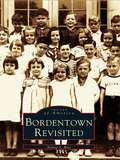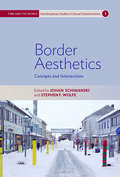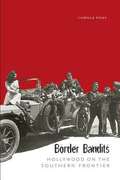- Table View
- List View
Booking Performance Tours
by Tony MicocciBooking Performance Tours is the quintessential guide for anyone involved in the touring of live arts and entertainment-as a producer, artist, presenter, agent, manager, or attorney. Industry insider Tony Micocci shares keen insights on: --Relationships among producers, agents, managers, and presenters --Negotiating styles --Taxation --Technology --Ethics in professional dealings --Booking strategies --Nonprofit versus commercial touring --Special considerations for booking Broadway and popular music --International touring --External factors affecting the field Booking Performance Tours includes nearly 100 pages of appendixes containing engagement contracts, technical riders, deal memos, and representation contracts, with extensive point-by-point analyses of all provisions. This book is destined to become the classic reference for the industry.
Booking Performance Tours: Marketing and Acquiring Live Arts and Entertainment
by Tony MicocciPack up the costumes and the instruments! It's time to take your show on the road. For anyone who manages, produces, represents, or works in a repertory theater, dance company, or next-hot-thing band, Booking Performance Tours presents all the information needed to book live shows. The process is complex--presenters, agents, lawyers, board members, investors, funders, transporters, freight companies, and artists are all involved--but this book makes it simple by breaking it all down into manageable pieces, explained in a straightforward, readable style. Full information on riders, negotiating, documents, taxes, tech, media, and many more essential details is included. Get this book, and hit the road!
Booking and Tour Management for the Performing Arts
by Rena ShaganThis third edition of Booking and Tour Management for the Performing Arts has been updated to include information about the revolutionary new ways that performers, managers, and presenters are using the Internet to transform the business of booking live performing events. Special chapters by outside experts provide in-depth information about what presenters need from artists, the technical aspects of touring, the unique demands of touring abroad, and touring through the eyes of the artist. The book includes a Tour Manager's Resource Kit and numerous other ready-to-use sample materials, including a contract, letter of agreement, technical information questionnaire, performance checklists, calendars, schedules, tour budget model, technical glossary, and much more.
Books, Movies, Rhythm, Blues
by Nick HornbyA new collection of nonfiction writing on culture from the bestselling author of High Fidelity. Books, Movies, Rhythm, Blues brings together the best of Nick Hornby's non-fiction pieces on film and tv, writers and painters and music, and including one exceptional fragment of autobiography. With subject matter ranging from the Sundance Festival to Abbey Road Studios, from P.G. Wodehouse to The West Wing, these are pieces that 'were written for fun, or because I felt I had things to say and time to say them, or because the commissions were unusual and imaginative, or because ... I was being asked to go somewhere I had never been before.'
Boom Chicago Presents the 30 Most Important Years in Dutch History
by Matt Diehl Andrew Moskos Pep Rosenfeld Saskia MaasAn exciting history of the improv group you've never heard of that changed comedy in America—this is the story of Boom Chicago in Amsterdam as told by its founders and most famous alumni."It’s kind of crazy, the impact on culture so many Boom Chicago alums have had. Boom was where I became my best comedic self: the excitement of Amsterdam, the freedom of that environment, the letting loose—it's magic. There's no better training ground." —Jordan Peele"Boom Chicago should have ended up on the scrap heap of 'Terrible Ideas Americans Have While Stoned in Amsterdam.' But when you stubbornly love one thing (comedy) as much as another thing (Amsterdam), you just believe they should be together. And here we are—thirty years later, Boom Chicago is alive and kicking." —Seth Meyers"Working at Boom Chicago was an unbelievable experience. Thank goodness someone was smart enough to write it all down! You're lucky 'cause you get to read about THE most exciting, fun, and illegal time I've ever had!" —Amber RuffinFeaturing interviews with: Meyers, Peele, Ruffin, Jason Sudeikis, Ike Barinholtz, Greg Shapiro, Kay Cannon, and many more; and a sixteen-page, full-color insert with both behind-the-scenes snapshots and images from live performances. What do Ted Lasso, Get Out, Late Night with Seth Meyers, 30 Rock, A Black Lady Sketch Show, Breaking Bad, Saturday Night Live, Girls5Eva, The Colbert Report, Inside Amy Schumer, Pitch Perfect, Key & Peele, The Daily Show, MADtv, Rick and Morty, The Amber Ruffin Show, Horrible Bosses, Portlandia, It's Always Sunny in Philadelphia, Suicide Squad, Superstore, How I Met Your Mother, Wicked, The Pee-Wee Herman Show, Brooklyn Nine-Nine, and Broad City all have in common? They all feature writers, creators, directors, or stars who got their start at Boom Chicago.Having risen roughly to the middle of Chicago's cutthroat comedy scene, Andrew Moskos and Pep Rosenfeld decamped the Midwest for Amsterdam, Netherlands in 1993 to start their own improv comedy troupe, Boom Chicago. In a foreign land with zero tradition of English-language humor, Moskos and Rosenfeld unwittingly created the finishing school for some of today's most groundbreaking comedic talents. They (along with coauthors Matt Diehl and Saskia Maas) document this journey in the definitive oral history Boom Chicago Presents the 30 Most Important Years in Dutch History. From its stages, Boom Chicago went on to launch cultural game changers like Seth Meyers, Jordan Peele, Amber Ruffin, Jason Sudeikis, Brendan Hunt, Ike Barinholtz, Kay Cannon, and Tami Sagher (and that's just a partial list). At Boom, these young upstarts honed their craft in front of unsuspecting foreign audiences and visiting dignitaries like Burt Reynolds, Run-DMC's Jam Master Jay, Dutch royalty, and the Netherlands's prime minister—all while navigating a world with legal weed and prostitution, annual holiday celebrations involving blackface, cookies with weird racist names, and football that has nothing to do with the NFL. From this culture shock, this collective created a more topical, inclusive, tech-savvy humor that would become the dominant comedy style of our time.
Boom: Mad Money, Mega Dealers, and the Rise of Contemporary Art
by Michael ShnayersonThe meteoric rise of the largest unregulated financial market in the world-for contemporary art-is driven by a few passionate, guileful, and very hard-nosed dealers. They can make and break careers and fortunes. <P><P>The contemporary art market is an international juggernaut, throwing off multimillion-dollar deals as wealthy buyers move from fair to fair, auction to auction, party to glittering party. <P><P> But none of it would happen without the dealers-the tastemakers who back emerging artists and steer them to success, often to see them picked off by a rival. Dealers operate within a private world of handshake agreements, negotiating for the highest commissions. <P><P>Michael Shnayerson, a longtime contributing editor to Vanity Fair, writes the first ever definitive history of their activities. He has spoken to all of today's so-called mega dealers-Larry Gagosian, David Zwirner, Arne and Marc Glimcher, and Iwan Wirth-along with dozens of other dealers-from Irving Blum to Gavin Brown-who worked with the greatest artists of their times: Jackson Pollock, Andy Warhol, Cy Twombly, and more. <P><P>This kaleidoscopic history begins in the mid-1940s in genteel poverty with a scattering of galleries in midtown Manhattan, takes us through the ramshackle 1950s studios of Coenties Slip, the hipster locations in SoHo and Chelsea, London's Bond Street, and across the terraces of Art Basel until today. <P><P>Now, dealers and auctioneers are seeking the first billion-dollar painting. It hasn't happened yet, but they are confident they can push the price there soon.
Boomerangs: How to Make and Throw Them
by Bernard S. MasonIt only takes minutes to make a good, guaranteed-to-return boomerang. By following a few more simple steps you will learn how to throw it so it will always return to you. Soon you will be in possession of a new hobby, experimenting with many types of boomerangs, flying them in new tricks and stunts, achieving a degree of accuracy and excitement that will give you pleasure whether you are young or old, whether it is your first boomerang or your fiftieth.This is the outstanding book on boomerangs. While a certain amount of the information is drawn from native methods, most is composed of new designs by Bernard Mason that are easy to make, easy to throw, safe, and full of possibilities. There are the standards — cross-stick boomerangs ranging in size from fourteen inches to three feet. There are pin-wheel boomerangs, undoubtedly the best flyers. There are boomabirds, boomerangs in bird shapes, airplane shapes, and other ornamentals with a wealth of strange flight patterns. There are tumblesticks, boomerangs that look like nothing but simple straight sticks — until you throw them. There are boomerangs you can make from cardboard. And there are the curved stick boomerangs from Australia. In each section there are examples of the best flyers, plus others — largest, smallest, jumpers, fast flyers, smooth flyers, and many more.Since, as the author says, each boomerang possesses its own unique character, there is always the feeling of magic each time a new one is made and thrown. With this book you can learn to make nearly every type of known boomerang, learn to fly them, and add a new area of skill and recreation to your life.
Boomtime Boca: Boca Raton in the 1920s (Images of America)
by Susan Gillis Boca Raton Historical SocietyBoca Raton, Florida, was a tiny farming community onthe southeastern coast of Florida when the state's 1920s real estate boom grew into a national phenomenon. Investors and new residents were drawn to the state from all over the country, a time Floridians referred to as "the Boom." In April 1925, well-known Palm Beach society architect Addison Mizner revealed his plans for an ambitious newdevelopment in Boca Raton. The plans included a gigantic oceanfront hotel, elegant mansions, golf and polo grounds, and palm-lined boulevards. The popularity of Mizner's projects stimulated many similar developments within the region, increasing the population of the town from 100 to several hundred residents. By the fall of 1926, however, theFlorida land boom came to an end. Boca Raton returned, for the most part, to its small-town agricultural heritage by 1930. By the end of the 20th century, boomtime dreams were fully realized and Boca Raton became one of Florida's most prestigious addresses.
Boone
by Donna Akers WarmuthIt was the Old Buffalo Trail that led both Native Americans and Daniel Boone to the site of present-day Boone, North Carolina, at an elevation of 3,333 feet. Located among the scenic and cool mountains of the High Country, Boone was for a long time a seasonal hunting spot with only a few settled families. After the Civil War the community's population began growing, and in 1899, the tiny town of Boone included 150 residents. In the 1880s, the treacherous and steep Boone and Blowing Rock Turnpike began to bring commerce and visitors to the mountains. Although this remote town was an unlikely location for a school, Watauga Academy was established in 1899, and it would later become Appalachian State University, one of the top-ranked Southern public colleges.
Boone County (Images of America)
by Kassie RitmanBoone County, founded on April Fools' Day in 1830, is situated in the center of the state, abutting Indiana's capital, Indianapolis. The first settlers found swampy land overgrown with ancient hardwoods, riddled with rattlesnakes, and teeming with wetland creatures--most famously, frogs. Although life was challenging for the area's first settlers, most persevered. Many chided that Boone was not fit to be included as a part of the fledgling state of Indiana. They dubbed the newly platted area as the "State of Boone" to set it aside from the superior farmland and living conditions found elsewhere in Indiana. Boone County's first census counted 621 persons in 1830. Today, many of the original surnames remain prevalent among a population that exceeds 60,000 residents.
Boone County (Then and Now)
by Robert SchrageAs one of the fastest growing counties in the country, Boone County has come a long way since its founding in 1799. Communities such as Florence, Union, and Burlington have changed dramatically, but residents still remember the vibrant past. Others such as Rabbit Hash, Belleview, and Petersburg remain small towns with much of their historic charm. In Then & Now: Boone County, vintage images are compared to modern photographs to showcase an interesting history and a tremendous change. The neighborhoods examined in this volume make up the heart of the county.
Boone Hall Plantation (Images of America)
by Michelle AdamsIn 1681, Boone Hall Plantation began its long history in the Lowcountry. From the Boone family through the McRaes, the plantation's residents, black and white, all left a significant imprint upon the land as the plantation survived two wars and became the longest running brickyard in the area. As a center of tourism, Boone Hall embodies the romance of the South while providing the resources necessary to understand the network of lives that has inhabited the plantation for over 300 years. The plantation is tightly linked with the community and draws upon that relationship in its many educational programs. Numerous festivals are celebrated at the plantation, including the Strawberry Festival and Happy Jack's Pumpkin Patch, and many seek the unique landscape for their social gatherings. Through these relationships and events, Boone Hall will endure well into the future.
Boonton (Images of America)
by Boonton Historical SocietyBoonton’s origins date back to 1747 with the forgotten village of Old Boonton, the remains of which now lie under the Jersey City Reservoir. Distinguished for its iron forges and mills, Old Boonton owed its existence primarily to the waterpower provided by the Rockaway River. The building of the Morris Canal in 1825, which bypassed Old Boonton and caused its decline, was the driving force in the development of the current town of Boonton 1.5 miles upriver. In 1830, the New Jersey Iron Company selected this site for a new ironworks and imported machinery and workers from England, who brought with them their families and religions. Soon, homes, churches, and schools were built, and a town developed. As the years passed, Boonton evolved from a single-industry town into what it is today, an established community with an abundance of park lands, historic homes, and a thriving main street business district.
Boothbay Region Revisited, The
by Boothbay Region Historical SocietyThe Boothbay Region Revisited is a collection of vintage photographs illustrating the Yankee tenacity of those who settled this historic coastal area. Images ranging from the 1880s to the late 1900s depict the beautiful backdrop of Boothbay and Boothbay Harbor and the activities that have taken place there: shipbuilding and seafaring, small-town commerce and recreation, and the rise and expansion of the region as a summer resort.
Bootleg Homes of Frank Lloyd Wright, The: His Clandestine Work Revealed (Landmarks)
by Bob HartnettUncover the secret Chicago laboratory of Frank Lloyd Wright's Prairie Style. Before Frank Lloyd Wright officially launched America's most famous architectural career, he was designing the building blocks of his legendary prairie style on the side. In violation of his contract with his employers, Adler and Sullivan, Wright moonlighted as an independent architect from his Oak Park studio. From 1892 through the spring of 1893, he experimented with the elements that would become his signature in houses in Chicago, La Grange and Oak Park. The full roster of these "bootleg homes" has remained a matter of mystery and debate. Robert Hartnett seeks to provide the first definitive account of the hidden artifacts of Wright's storied legacy.
Booze & Vinyl: A Spirited Guide to Great Music and Mixed Drinks
by Tenaya Darlington André DarlingtonThe ultimate listening party guide, Booze and Vinyl shows you how to set the mood for 70 great records from the 1950s through the 2000s.From modern craft cocktails to old standbys, prepare to shake, stir, and just plain pour your way through some of the best wax ever pressed. Wickedly designed and featuring photography throughout, Booze & Vinyl is organized by mood, from Rock to Chill, Dance, and Seduce. Each entry has liner notes that underscore the album's musical highlights and accompanying "Side A" and "Side B" cocktail recipes that complement the music's mood, imagery in the lyrics, or connect the drink to the artist. This is your guide to a rich listening session for one, two, or more.Among the 70 featured albums are: Sgt. Pepper's Lonely Hearts Club, Purple Rain, Sticky Fingers, Born To Run, License to Ill, Appetite for Destruction, Thriller, Like a Virgin, Low End Theory, The Rise and Fall of Ziggy Stardust, Hotel California, Buena Vista Social Club, Back to Black, Pet Sounds, Vampire Weekend, and many more
Booze Cruise: A Tour of the World's Essential Mixed Drinks
by André DarlingtonGo on a tour of the world's top cocktail destinations, featuring insider info and food-and-drink recipes that will add thrilling new flavors and global flair to your everyday life.World traveler and drinks writer André Darlington will be your tour guide through more than forty of the globe's most vibrant cocktail locales. Each city stop is packed with insider intel on the current scene, local history, easy food-and-drink recipes, and tasting notes. This sloshy voyage includes: Amsterdam, Dublin, London, Madrid, Stockholm, Cape Town, Tangier, Delhi, Singapore, Beirut, Tokyo, Bogotá, Havana, New Orleans, São Paulo, Toronto, Sydney, and many more!
Booze Over Broadway: 50 Cocktails for Theatre Lovers
by Tiller PressEnjoy a delicious cocktail while belting out Broadway tunes with this witty guidebook that perfectly pairs your favorite showtunes and Broadway musicals with innovative libations.Do you have a strong love for Andrew Lloyd Weber or Stephen Sondheim? Do you consider &“Defying Gravity&” to be the ultimate, underrated karaoke song? Then get ready to raise your glass and belt out that high-C with Booze Over Broadway. Featuring 50 delectable drinks from a rising star in the New York City bar scene, this clever and creative manual allows you to make delicious cocktails right from the comfort of your home. This witty, accessible book also includes commentary, step-by-step instructions, and whimsical illustrations throughout. Recipes include: -Hello, Daquiri! -The Best Little Whiskey Sour in Texas -Don&’t Cry for Me, Appletini -I Don&’t Know How to Love Gin -Bloody, Bloody, Mary Jackson -Once on this (Long) Island Iced Tea -Brandy Alexander Hamilton -If I Were a Rich Man(hattan) -And more! Fresh and fun, Booze Over Broadway will have cocktail connoisseurs and Broadway buffs alike screaming &“encore!&” (and &“cheers&”).
Bordado paso a paso (Embroidery Stitches Step-by-Step)
by Lucinda Ganderton¡Aprende más de 200 puntos de bordado con esta práctica guía!Si estás buscando perfeccionar tu técnica o aprender a bordar, este libro de bordado será tu mejor aliado. Reúne toda la información que necesitas para convertirte en todo un experto de este arte milenario: materiales y técnicas de montaje, telas, marcos, explicaciones paso a paso y fotografías a todo color de los diferentes puntadas de bordado.con una lista de sugerencias de uso para guiar a los lectores dependiendo de sus necesidades.Incluye un capítulo que engloba todos los recursos esenciales para llevar tu proyecto a cabo: materiales, herramientas, técnicas y mucho más.Con un muestrario de puntadas en el que podrás ver a simple vista todas las técnicas que encontrarás en el interior del libro.Una increíble enciclopedia visual en la que amantes del bordado de todas las edades encontrarán inspiración e ideas creativas para sus proyectos. ¡Descubre todos los consejos y herramientas, halla tu técnica e inicia tu próximo proyecto!An inspirational and practical guide to more than 200 embroidery and needlepoint stitches.Whether you are an embroidery beginner wanting to learn the basics or an accomplished sewer seeking to perfect your technique, this all-encompassing embroidery stitch book has something for everyone to love. Embroidery Stitches Step-by-Step covers every aspect of the craft: materials and mounting techniques, fabrics and frames, along with more than 200 stitches illustrated and explained with easy-to-follow instructions.This elegant embroidery book further features:A comprehensive step-by-step guide to more than 200 essential stitches.A stitch gallery that provides an at-a-glance showcase of all techniques featured in the book.Each stitch comes with a difficulty level and list of suggested uses to guide readers to the best technique for their needs.Materials, Tools, and Techniques chapter covers all essential equipment and resources readers may need to create their embroidery projects.With an at-a-glance gallery to help you find the perfect stitch for your next project, this tried-and-trusted modern classic is a must-have for stitchers of all ages and abilities.
Bordentown
by Arlene S. BiceOriginally known as Farnsworth's Landing, Bordentown was settled in 1682 by Quaker Thomas Farnsworth. A natural hub of transportation for its key location on the Delaware River between Philadelphia and New York City, Bordentown flourished in the nineteenth and twentieth centuries. Internationally known artists, writers, and inventors called Bordentown home; industry thrived; and many private schools, including Bordentown Military Institute, were highly rated. As residents do today, the people of early Bordentown took great pride in their city. With some two hundred vintage photographs, Bordentown explores the city and its fascinating people from the mid-1800s to the mid-1900s. Thomas Paine, the father of the American Revolution, considered Bordentown his home, as did Francis Hopkinson, designer of the American flag and signer of the Declaration of Independence. The John Bull steam engine was shipped from England and assembled in Bordentown by Isaac Dripps. Joseph Bonaparte, brother of Napoleon, lived happily at Point Breeze, his estate in Bordentown. These stories, along with many others, are portrayed by the well-preserved historical photographs and informative text of this volume.
Bordentown
by Arlene S. Bice Patricia DesantisBordentown, New Jersey, is located at the confluence of the Delaware River, Blacks Creek, and Crosswicks Creek. The town sits on a high bluff northeast of Philadelphia. Bordentown has always been an accessible crossroads, first by water and train and presently by car and light rail. The community was a railroading town and had a successful boating industry. It eventually transitioned into a factory town, supporting such businesses as Eagle Shirt Factory, Ocean Spray Cranberries, and Springfield Worsted Mills. Motels, drive-ins, and diners sprang up along the highway as halfway stops from northeast to southwest Jersey. The New Jersey Turnpike brought tourists and visitors, who frequented the locally owned restaurants, shops, and galleries. Bordentown showcases the rich industrial and community history of this Burlington County town.
Bordentown Revisited (Images of America)
by Arlene S. BiceBordentown Revisited highlights the memorable growth of an area located at the kink of the Delaware River. The city of Bordentown and neighboring Fieldsboro share a stretch ofriverfront, and that waterfront location brought them great prosperity during the industrial years. The rural township traded its agricultural occupation for housing development. Then, as old paths and byways became streets and highways, businesses, motels, and restaurants emerged along the roadside.
Border Aesthetics: Concepts and Intersections (Time and the World: Interdisciplinary Studies in Cultural Transformations #3)
by Johan Schimanski Stephen F. WolfeFew concepts are as central to understanding the modern world as borders, and the now-thriving field of border studies has already produced a substantial literature analyzing their legal, ideological, geographical, and historical aspects. Such studies have hardly exhausted the subject's conceptual fertility, however, as this pioneering collection on the aesthetics of borders demonstrates. Organized around six key ideas-ecology, imaginary, in/visibility, palimpsest, sovereignty and waiting-the interlocking essays collected here provide theoretical starting points for an aesthetic understanding of borders, developed in detail through interdisciplinary analyses of literature, audio-visual borderscapes, historical and contemporary ecologies, political culture, and migration.
Border Bandits: Hollywood on the Southern Frontier
by Camilla FojasThe southern frontier is one of the most emotionally charged zones in the United States, second only to its historical predecessor and partner, the western frontier. Though they span many genres, border films share common themes, trace the mood swings of public policy, and shape our cultural agenda. In this examination, Camilla Fojas studies how major Hollywood films exploit the border between Mexico and the United States to tell a story about U. S. dominance in the American hemisphere. She charts the shift from the mythos of the open western frontier to that of the embattled southern frontier by offering in-depth analyses of particular border films, from post-World War II Westerns to drug-trafficking films to contemporary Latino/a cinema, within their historical and political contexts. Fojas argues that Hollywood border films do important social work by offering a cinematic space through which viewers can manage traumatic and undesirable histories and ultimately reaffirm core "American" values. At the same time, these border narratives delineate opposing values and ideas. Latino border films offer a critical vantage onto these topics; they challenge the presumptions of U. S. nationalism and subsequent cultural attitudes about immigrants and immigration, and often critically reconstruct their Hollywood kin. By analyzing films such as Duel in the Sun, The Wild Bunch, El Norte, The Border, Traffic, and Brokeback Mountain, Fojas demands that we reexamine the powerful mythology of the Hollywood borderlands. This detailed scrutiny recognizes that these films are part of a national narrative comprised of many texts and symbols that create the myth of the United States as capital of the Americas.
